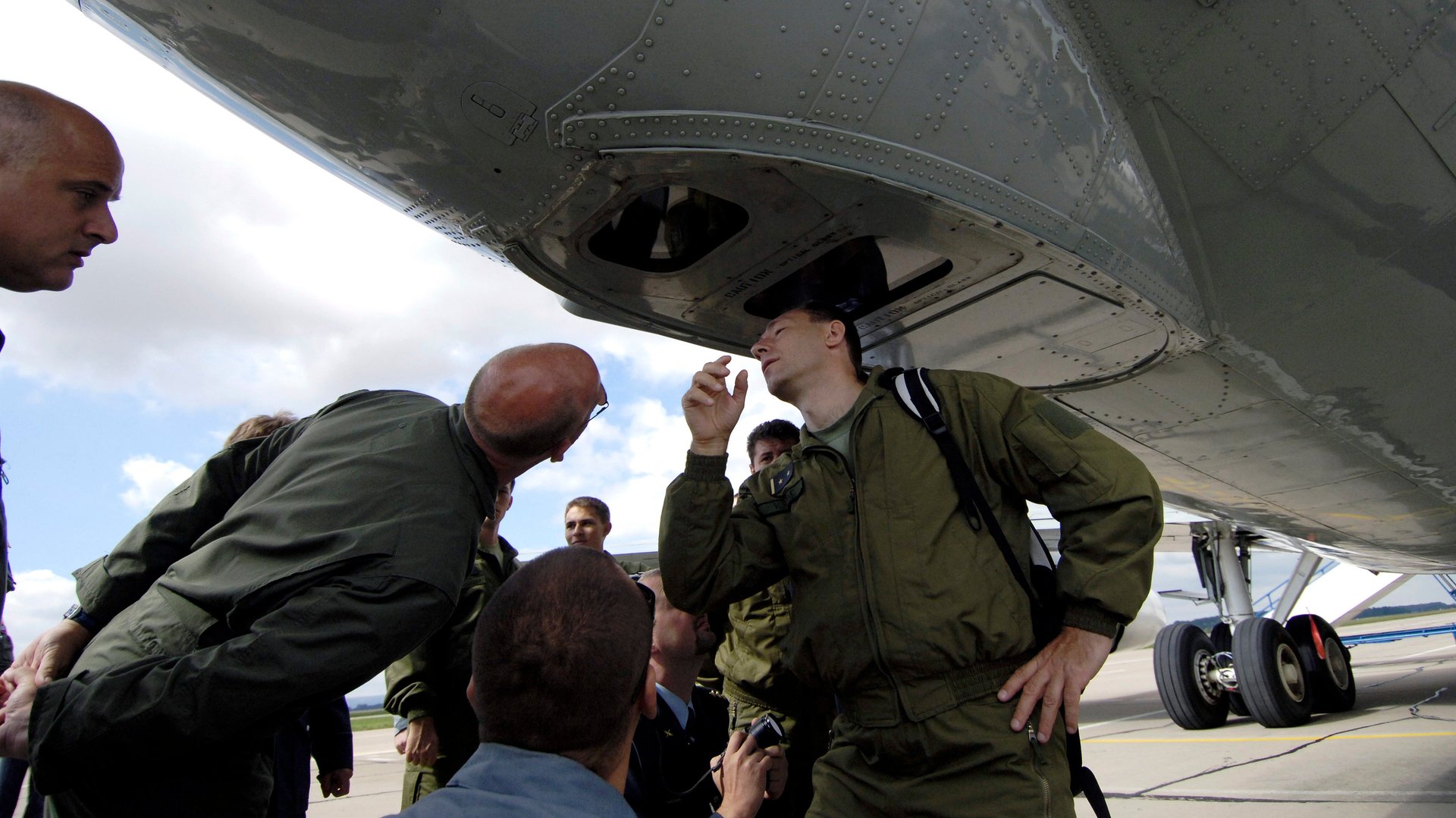What is the Open Skies Treaty and why does Donald Trump want it canceled?
Since 2002, the US, Russia and 32 other countries have allowed each other’s reconnaissance planes to fly overhead and snap pictures of their armed forces. The idea is to give each participant confidence that the other is not plotting a sudden attack.


Since 2002, the US, Russia and 32 other countries have allowed each other’s reconnaissance planes to fly overhead and snap pictures of their armed forces. The idea is to give each participant confidence that the other is not plotting a sudden attack.
Now—quietly and with little public notice—US president Donald Trump appears ready to pull the United States out of this treaty. News began trickling out in early October that the administration wanted a unilateral exit, and the chair of the House Foreign Relations committee sent a letter to the White House (pdf) demanding answers. The Wall Street Journal now reports that Trump has signed a document “signaling his intent” to leave the treaty.
But why?
The standard answer has been that former national security adviser John Bolton dislikes arms control treaties in general. Bolton’s gone, but members of his team remain in place, and want to get rid of any deal that restricts US sovereignty. (The White House did not respond to a question about its view of the treaty.) Some Republicans in Congress have repeatedly tried to cut funding for the aging US planes that perform overflights in an effort to undercut the treaty, which restricts each country to specific types of planes and sensors that are open for inspection.
“Opposition is confined to a particularly hawkish wing of the Republican party,” says Kingston Reif, who directs threat reduction research at the Arms Control Association. “It seems to me no final decision has been made and debate within the administration continues.”
The national security establishment has generally backed the treaty. In a May 2018 letter to Congress (pdf), then-secretary of defense James Mattis noted that Open Skies imagery, because it is verified by all parties and unclassified, creates common ground for the US and its allies to engage with Russia during conflicts. That’s a key reason why supporters believe overflights shouldn’t be replaced with satellite imagery capable of providing similar data.
Another reason given to end the deal is that Russia has not fully complied with the treaty in recent years, imposing restrictions on flights over some key military areas. The US has in turn restricted Russian access to certain areas of its own airspace. But the Cold War architects of the treaty argue that “these problems can be solved through professional, pragmatic diplomacy, not by abandoning treaty commitments.”
Maybe the answer lies in a third country. When the US pulled out of the Intermediate Nuclear Forces (INF) treaty this year, one reason was that China was not bound by its limitations on ground-launched ballistic missiles, and so it made little sense for the US to restrict itself against a key rival. China is also not a member of the Open Skies treaty, which was inked in 1992, before it became the major power it is today.
But the third country in this case is likely Ukraine. Russia’s seizure of Crimea from Ukraine in 2014 and its backing of an insurgency in the province of Donbass has made the region a conflict hot-spot. Ukraine’s government is eager to make sure it knows exactly what forces are arrayed across its borders, and to demonstrate the strength of its alliances. As recently as December 2018, the US and its allies used an Open Skies overflight to signal commitment to Ukraine’s security.
The Wall Street Journal’s report notes that Tim Morrison, a national security council staffer, is among the most important critics of the Open Skies Treaty in the White House. Bill Taylor, the former ambassador to Ukraine, said in recent testimony that Morrison helped coordinate the president’s efforts to withhold US security aid from Ukraine until the country’s leaders announced an investigation into a political rival, former vice president Joe Biden. This scheme is now at the center of Congress’ inquiry into impeaching president Trump.
Is it possible that the Open Skies treaty became another piece of leverage in this effort, like Javelin anti-tank missiles or an Oval Office meeting with Trump?
“I don’t have enough evidence to support that contention,” Reif said. “But Ukraine values the treaty. It uses the treaty to raise awareness about and counter Russia’s aggression against Ukraine…they want to see the treaty continue and the US continue to participate in it.”